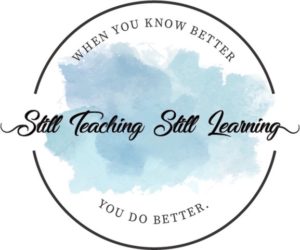
I recently updated a 2019 post about The Knowledge Gap: The Hidden Cause of American’s Broken Education System — and How to Fix it by Natalie Wexler. You can read that post HERE.
In this post, I am offering suggestions for how to incorporate more knowledge-building activities into your teaching. This will be especially helpful to you if your school or district does not use a knowledge-building ELA curriculum.
There is a LOT here. Please don’t let it overwhelm you! Just choose one or two tips to start and add on other tips when you feel ready.



Building Knowledge in Literacy Instruction
*Use one of these 18 strategies from the New York Times before reading a fiction OR nonfiction text. (While the New York Times lists these strategies as being warmups for nonfiction text, there are many fiction texts that include information as well. These strategies work well for both types of text.)
These strategies will help build the necessary background knowledge for understanding the text and will help “prime” students for the learning to come from the book.
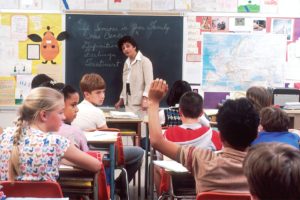


*If you do not have an educator’s guide for the particular text you are using for instruction, search for one online. There are many free resources available. But if this is a text that you will re-use every year, it might also be worth it to invest in a purchased guide.
*Use text sets to go more in-depth on a topic. For example: if you are reading a novel such as Chains by Laurie Halse Anderson (an awesome book, by the way), you might also read the nonfiction book Everybody’s Revolution by Thomas Fleming or Spies in the American Revolution for Kids by Carla Killough McClafferty.
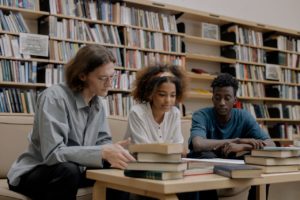


*Consider using biographies as read-alouds. Sticking with the American Revolution topic, you might read:
American’s Black Founders: Revolutionary Heroes & Early Leaders by Nancy I. Sanders
Sybil Ludington Rides to the Rescue by Jessica Gunderson
Benjamin Franklin, American Genius: His Life & Ideas by Brandon Marie Miller
George vs. George: The American Revolution as Seen From Both Sides by Rosalyn Schanzer
or American Revolution Heroes for Kids by Christine T. Chaffee.
*Keep in mind before using any text for instruction that you want to give kids “just enough” background knowledge. What do they absolutely need to be told or taught in order to understand the text? Don’t tell them everything that’s already in the text, leaving them no reason to even read it. (And please tell me I am not the only teacher who has ever been guilty of doing that!)



*Before reading a text, consider asking students the following questions to rate their amount of prior knowledge.
I have never heard of it.
I have heard of it, but don’t know what it is.
I have some idea of what it is, but it’s not very clear.
I know what it is and could explain what it’s used for.
I know what it is and when to use it, and I could teach a class on it myself.



*One of the most useful literacy question frameworks I have ever used comes from Kylene Beers and Robert Probst’s books Disrupting Thinking and Forged by Reading.
A photo of my anchor chart is below. (As you can see, I am not an artist.)
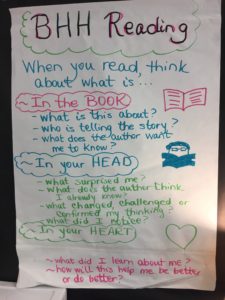


The question “what changed, challenged, or confirmed your thinking?” is especially important, especially for those students who believe themselves to be “experts” on a topic already. This question encourages them to keep themselves open to new information that may not fit with what they thought they knew.
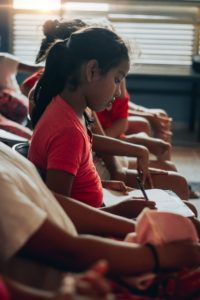


*I can’t say it enough: read aloud, read aloud, read aloud. Every chance you get. See my post about incorporating Jillian Heise’s #classroombookaday in my classroom HERE.
*Whenever possible, teach the meaning of idioms, multiple-meaning words, and homophones. The book Idioms for Kids and Dear Deer: A Book of Homophones are fun and engaging ways to learn.
Another helpful book is Teaching Vocabulary Words with Multiple Meanings (grades 2-4) and the same title for grades 4-6. (These books are out of print but can sometimes be found in online used bookstores.)



*Have you heard of Reading Rev? I found this website and immediately bought the intermediate phonics/spelling/morphology program. Here’s the link if you want to check it out. Bri Luna, the creator, also shares lots of free resources and has several helpful YouTube videos as well.
*One of my very favorite literacy gurus is Jen Jones. Her website is Hello Literacy. Jen has created all kinds of resources based on the Science of Reading and offers professional development (both in person and online) as well. One of my favorite products is her Shades of Meaning which gets kids so engaged in learning the exact meanings of various verbs or adjectives, before placing them on a continuum according to their meaning.



*Some tried and true strategies to use in reading instruction:
~teaching nonfiction text features and using them when reading
~teaching students to activate their own background knowledge before reading. Good questions to ask are: “what do you already know?” and “how does this connect to something else we’ve learned?” It’s also good to find out when your students know very little or absolutely nothing about a topic!
~teaching vocabulary as you read together. Model for students your own word curiosity and word learning. Stop and use Google to show students how to find the exact definition of unknown words.
~when assessing a standard or a reading strategy, consider including questions such as “what are the big ideas about ______?” or “what is important to remember about _______?”



~having students write about what they’ve read. One of my favorite strategies for this is using The Writing Revolution’s three conjunctions “because, but, so.” There are lots of great resources on their website HERE. If you want a more step-by-step guide for how to implement many of their strategies, TPT has a great resource HERE.
*“Perspectives on Language & Literacy” is an excellent online research article resource.
*One of my favorite podcasts is Melissa & Lori Love Literacy.
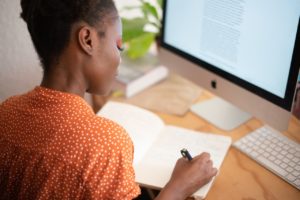


Building Knowledge in Content Area Instruction
*Take your students on field trips (the best option), or on virtual field trips (a great back-up option)! Here’s a list of some virtual possibilities.
*Wonderopolis is one of my favorite websites. You and your class can search for specific wonders related to a unit of study, or you can ask students to find and read about one wonder of the day that interests them. Either activity will build knowledge.



*Street View Treks lets you and your students explore places around the world, using Google Maps.
*5 Clue Challenge – here is the site description from Michael Soskil, who created the site and the challenge: “Below you’ll find short videos where you will get 5 clues to guess a location, animal, or person. Some videos were created by me as I traveled. Others were submitted to me by teachers and children from around the globe. Your mission is to do research and figure out the answer to each challenge in as few clues as possible. Have fun!”



*Watch videos on topics of interest on TeachFlix.
*Where possible, align your literacy instruction with social studies topics. This post from We Are Teachers suggests some great ways to do that.



*Read aloud, read aloud, read aloud. When you read informational picture books, make sure to share the extra information which is often included at the front or the back of the book.
*Teach the vocabulary words your students will need to access the content. Keep a list or chart of the words you are learning. (This chart also helps you remember to review those words with your students from time to time.)



*Similar to the tip in the Literacy section above: when you are assessing a standard or a topic of study, consider including questions such as “what are the big ideas about ______?” or “what is important to remember about _______?”
*Another tip from the Literacy section that applies to content area topics: have your students summarize what they have learned (or what’s important about the topic) as a way to solidify their learning.



*Use videos from BrainPop (subscription site) or EdPuzzle (free).
*Stanford University’s Read Like a Historian lessons and Beyond the Bubble history assessments are great ways to extend the learning in Social Studies.
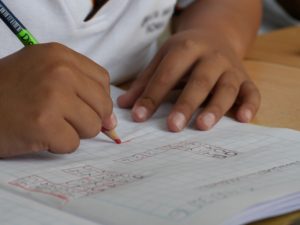


*Use some of the free Core Knowledge curriculum for your grade level. Even if it doesn’t align to the standards you are mandated to teach, you can choose some topics to extend your students’ learning or use some of the reading selections for small group instruction.



What about math instruction?
*Read picture books about mathematicians and stories about great moments in math.
Here are some suggestions:
~On a Beam of Light: A Story of Albert Einstein by Jennifer Berne
~Blockhead: The Life of Fibonacci by Joseph D’Agnese
~The Boy Who Loved Math: The Improbable Life of Paul Erdos by Deborah Heiligman
~The Girl With a Mind for Math: The Story of Raye Montague by Julia Finley Mosca



~Counting on Katherine: How Katherine Johnson Saved Apollo 13 by Helaine Becker
~Mae Among the Stars by Roda Ahmed
~Hidden Figures: The True Story of Four Black Women & the Space Race by Margot Lee Shetterly
~The Boy Who Dreamed of Infinity: A Tale of the Genius Ramanujan by Amy Alznauer
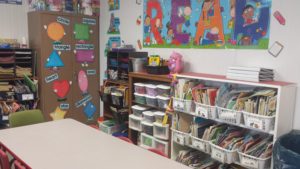


~Emmy Noether: The Most Important Mathematician You’ve Never Heard of by Helaine Becker
~Maryam’s Magic: The Story of Mathematician Maryam Mirzakhani by Megan Reid
~Nothing Stopped Sophie: The Story of Unshakable Mathematician Sophie Germain by Cheryl Bardoe
~The Librarian Who Measured the Earth by Kathryn Lasky



~On Beyond a Million: An Amazing Math Journey by David M. Schwartz
Building knowledge is critically important for building our students’ language comprehension, leading to stronger reading comprehension. I hope that these strategies are helpful to you. Please share your own strategies!



All of my content is intended to save teachers time and energy. Making good teaching sustainable – while also having a life outside of teaching – is my goal. Let me know how I can help YOU with this quick form!
Need more teacher encouragement? Join our Sustainable Teaching community!
